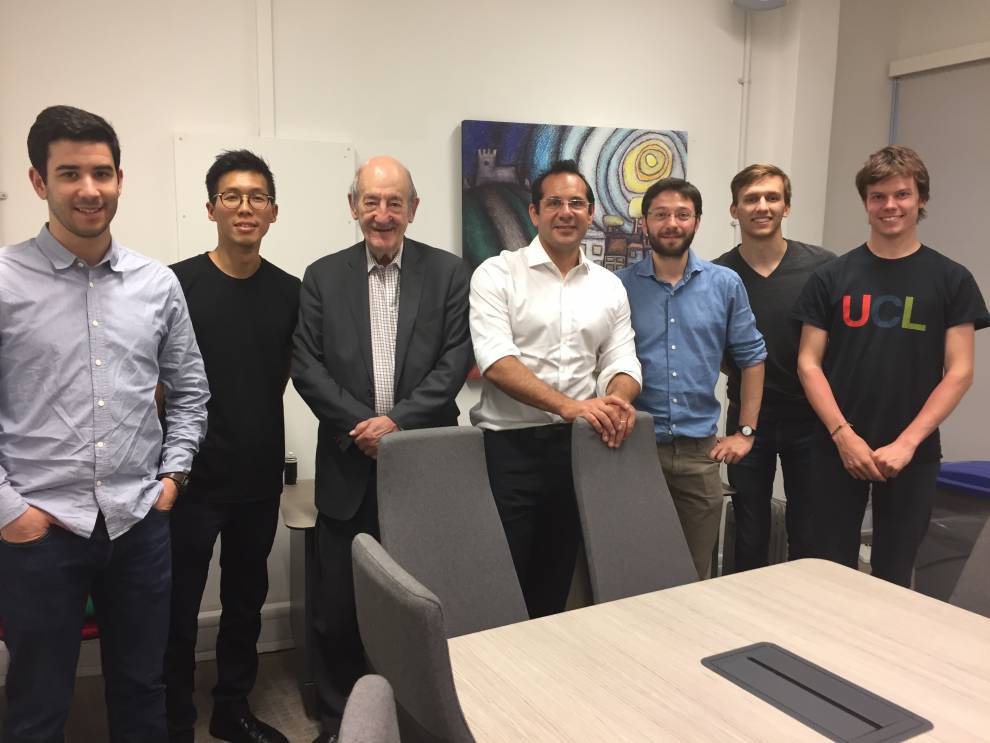
Lead
Professor
Pier Lambiase
Group Members
Professor Peter
Taggart (Emeritus Professor)
Dr Michele Orini
(Postdoc)
Dr Stefan van Duijvenboden (MRC Postdoc)
Dr Rui Provdencia
PhD Students:
Dr Neil Srinivsan (BHF Clinical
Fellow)
Dr Adam Graham
Diogo Santos (MRC CASE Fellow)
Tudor Basleaga (UCL IBME Fellow)
Clinical Postdoctoral Fellows:
Dr Claire Martin
Dr Richard Ang
Overview
The focus of our
group is the mechanistic basis of arrhythmias and the development of new
diagnostic and therapeutic strategies. Mechanistic studies are conducted in ion
channelopathies (Long QT & Brugada Syndrome) aswell as cardiomyopathies
utilising a combination of high density clinical mapping techniques (Carto,
Rhythmia), epicardial sock mapping in cardiac theatres and non-invasive
strategies (ECG Imaging and MRI). This is coupled with parallel basic science
research investigating the genetic basis of these conditions utilising
population data from UK Biobank and clinical cohorts at Barts Heart Centre
aswell as cellular (iPSC) and murine models.
We supervise MSc and undergraduate BSc projects and work closely with Industry evaluating new technologies for ablation of arrhythmias & prevention of sudden cardiac death including the Subcutaneous ICD. The group is also developing new algorithms to identify arrhythmogenic regions in sinus rhythm responsible for ventricular tachycardia without having to initiate arrhythmia and technology to identify patients at risk of sudden death with non-invasive techniques. Research is supported by project grants and fellowships from MRC, Welcome Trust, BHF, Heart Research UK, European Union (Marie Curie Action) Barts Charity and UCL CBRC.
Key Publications
Lambiase PD, Ahmed A.K, Ciaccio E.J., Chaubey
S., Brugada R., Chow A.W., Lowe M.D., McKenna W.J. (2009). High density substrate
mapping in Brugada Syndrome-the role of conduction and repolarization
heterogeneities. Circulation 14(2), 106-17. (Impact Factor 14.5). The first study to show how ventricular
arrhythmias that lead to cardiac arrest develop in this condition in man. The
study demonstrated how conduction slowing in the right ventricular outflow
tract precipitates cardiac arrest independent of a previously posited early
repolarisation mechanism. This has leant support recent ablation strategies to
prevent cardiac arrest in high risk Brugada Syndrome patients who have had
multiple cardiac arrests.
Gomes J, Finlay M, Ahmed AK, Ciaccio EJ, Asimaki A, Saffitz JE,
Quarta G, Nobles M, Syrris P, Chaubey S, McKenna WJ, Tinker A, Lambiase PD. Electrophysiological
abnormalities precede overt structural changes in arrhythmogenic right
ventricular cardiomyopathy due to mutations in desmoplakin-A combined murine
and human study. Eur Heart J. 2012 Jan
11 (IF 14.7) This manuscript demonstrates how
subclinical electrical abnormalities can be detected in patients with
preclinical arrhythmogenic cardiomyopathy and has significant implications in
the earlier diagnosis of this condition aswell as identifiying higher risk individuals
presenting with isolated extra beats (ectopics)
Nunn LM,
Bhar-Amato J, Lowe MD, Macfarlane PW, Rogers P, McKenna WJ, Elliott PM,
Lambiase PD. Prevalence of J-point elevation in sudden
arrhythmic death syndrome families. J Am Coll Cardiol. 2011 Jul
12;58(3):286-90. (Impact Factor 14.5). The first study to demonstrate that
this ECG marker is more common in families with a history of premature sudden
cardiac death and provides the evidence to support ongoing work to identify
novel genes leading to lethal arrhythmias.
Lambiase
PD, Barr C, Theuns DAMJ, Knops R, Neuzil P, Johansen JB, Hood M, Pedersen S,
Kääb S, Murgatroyd F, Reeve HL, Carter N, Boersma L. Worldwide Experience with
a Totally Subcutaneous ICD: Early Results from the EFFORTLESS S-ICD Registry. European Heart Journal
2014;35(25):1657-65 (IF 14.7) This is the first manuscript to publish the clinical
outcomes of patients receiving an innovative Internal Cardiac Defibrillator
that does not require an intravascular lead avoiding long term ICD lead
complications in patients who do not require pacing. It is transforming
practice particularly in young patients and has been recognised as a therapy in
the recent European Guidelines on the Management of Hypertrophic
Cardiomyopathy. I am the Chief Investigator in the EFFORTLESS Registry which is
an international Registry gathering prospective data on 1000 patients over 5
years on S-ICD recipients. The creation of such a Registry is recognised as a
transformative approach in new technology assessment to obtain real world
experience for the Device Industry as opposed to clinical trials alone. It is
enabling a number of important publications in the field of which I am
lead/co-author.
Taggart P, Orini
M, Hanson B, Hayward M, Clayton R, Dobrzynski H, Yanni J, Boyett M, Lambiase PD. Developing a novel comprehensive framework for the investigation
of cellular and whole heart electrophysiology in the in situ human heart:
historical perspectives, current progress and future prospects. Prog Biophys Mol Biol.
2014;115(2-3):252-60. This manuscript describes the
unique integrated approach we undertake utilising high density epicardial sock
mapping in cardiac surgical patients to investigation mechano-electric feedback
and the molecular basis of cardiac alternans. This experimental approach is
being applied in a number of mechanistic and interventional studies by the
group.
Research Prizes
awarded to the group include:
Michael
Davies Early career award (British Cardiovascular Society)
British
Heart Rhythm Society Young Investigator Award
European
Heart Rhythm Society Young Investigator Award
 Close
Close

